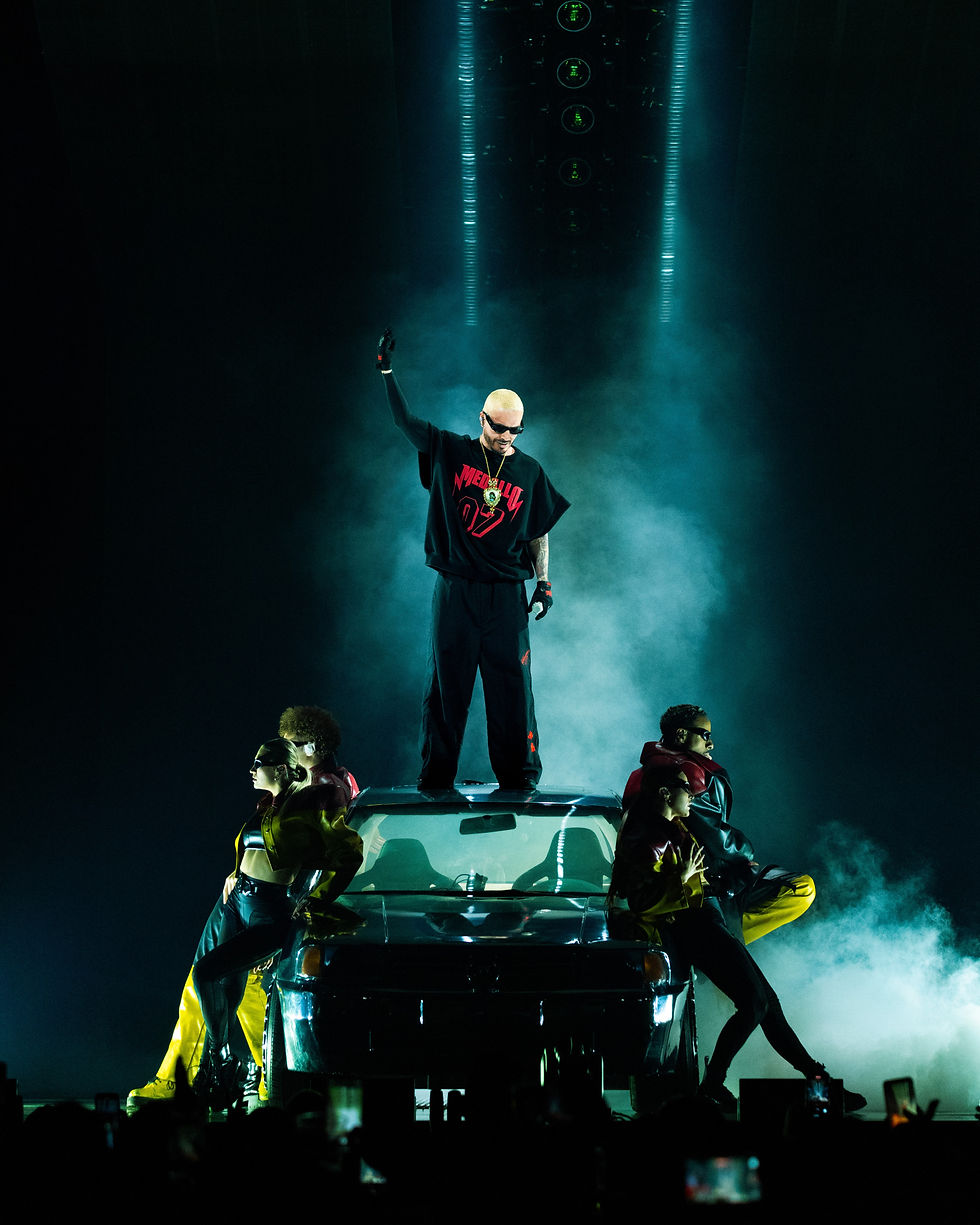J BALVIN BACK TO THE RAYO TOUR @ THE KIA FORUM
- Joseph Hernandez Torrejon
- May 20
- 3 min read
The pioneers of the early reggaetón movement were artists like Don Omar, Daddy Yankee, Tego Calderón, and Ivy Queen. These artists laid the foundation for a genre that would inspire generations. Today, artists like Rauw Alejandro, Bad Bunny, Feid, and Karol G define the new wave. But in between those two generations, one artist carried the torch and brought reggaetón back to life. A Colombian icon who reignited a genre that once seemed to fade. That artist is J Balvin.

There was a time when reggaetón was on pause, drifting out of the mainstream. As the pioneers announced their retirements, the genre lost momentum and was no longer dominating the charts. Much like the resurgence we're now seeing in regional Mexican music, reggaetón experienced a similar revival and it was sparked by the release of J Balvin’s hit song, “Ay Vamos.” That single marked a pivotal moment in reggaetón’s return to the spotlight.

“Ay Vamos” became one of the first solo Latin urban tracks to hit 1 billion views on YouTube, a staggering achievement when the genre was in a slump. It topped the Billboard Latin Songs chart and racked up hundreds of millions of streams worldwide reassuring that reggaetón was not only alive but was sensing a major comeback. Balvin’s early success proved there was still space for urban Latin music in global culture, and his rise played a critical role in making that return official.

J Balvin’s legacy extends far beyond music. He was one of the first Latin artists to seamlessly bridge the gap between reggaetón and other global industries. While we were used to seeing athletes and American pop stars in major collaborations, Balvin did something different. He brought Latino culture into the fashion, food, and gaming worlds. Whether it was launching his own Air Jordan sneakers, collaborating with Guess and Takashi Murakami, creating his own McDonald’s meal, or even virtually performing inside Fortnite, J Balvin opened doors that once seemed closed to Latin artists. He made it clear that reggaetón wasn’t just a genre, it was a movement and part of a culture.

J Balvin cemented a new future for reggaetón and inspired an entire wave of new artists. After the release of major albums like Energía, Vibras, OASIS, Colores, JOSE, and his latest, Rayo, he’s now embarked on what feels like a sold-out farewell tour. Through the years, he’s created unforgettable projects with artists from all over the world, and yet here he is. Still filling massive venues like the Kia Forum, giving fans in Los Angeles a night to remember.
As the night of the concert arrived, it felt like a dream come true. As a lifelong Latin music fan, I was finally about to see the legend himself, J Balvin, perform live.
Outside the arena, the energy was electric. Colombian flags waved proudly, and fans wore the iconic sombrero vueltiao, paying homage to their hero. Even before the show began, the party had already started. Balvin’s early hits were blasting through the stadium, and the crowd danced in anticipation. The show, titled “Back to the Rayo,” featured a Back to the Future inspired design, and fans hoped he’d perform both new tracks and classic anthems. And that’s exactly what he did.

As the lights dimmed and a silver car emerged on stage, Balvin stepped out and launched into songs from Rayo. The Forum erupted. From early hits like “6 AM” to newer tracks like “Doblexxó,” the setlist spanned his entire career. In one of the night’s most touching moments, he paid tribute to his fellow Colombian artists playing songs by Shakira, Maluma, and Karol G, a reminder of how deeply he values collaboration and community.
J Balvin sold out the Kia Forum and will likely continue to sell out arenas across North America as the Back to the Rayo tour continues. What he’s done for reggaetón and for the global Latino community is nothing short of monumental. He proved that Latinos have a place in every industry, from music and fashion to food and gaming. His work created space and inspired a generation, showing us that our culture is not only worth celebrating but worth elevating.

When I was growing up, my older sister always said the godfathers of reggaetón were Daddy Yankee and Don Omar. I respected that but I didn’t live through that era. I wasn’t there. What I do know is that the artist who made me fall in love with this genre the one I’ll tell future generations about is J Balvin.
I’ll always remember the day my dad turned on the radio and “Ay Vamos” came on. That moment changed everything. It was the day I knew I wanted to work in this industry, for this genre. And the rest is history.
Gracias, J Balvin. Written by Joseph Hernandez Torrejon Photos shot by Joseph Hernandez Torrejon
